China Deepens Steel Cuts as Iron Bull Market Crushes Profit
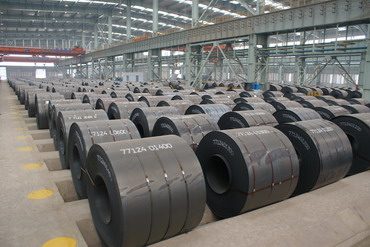
Chinese steelmakers are deepening the first production cuts in a quarter century as the bull market in iron ore drives up costs and squeezes profits.
Crude steel output will shrink as much as 2 percent this year, according to the China Iron & Steel Association. That’s lower than the group’s March estimate of a 1.1 percent decline and would be the first contraction since at least 1990. An acceleration in raw material costs and a collapse in steel prices has pushed the Bloomberg Intelligence China Steel Profitability Index to the lowest in almost seven years.
After decades of rapid growth spurred an unprecedented expansion in steel production, China’s now grappling with excess capacity as a property-led slowdown crimps demand. A contraction by the nation’s mills will be a boon to steelmakers from Brazil to the U.S., who say record exports from China are destabilizing the global market.
“China’s steel capacity has already peaked and output growth has slowed down,” Yi Zhu, a Hong Kong-based Bloomberg Intelligence analyst, said Friday. “Some high-cost steel producers are making a loss on rising iron ore prices. Capacity closures and the potential exit of the market of marginal producers may force more output cuts.”
Iron ore swung from a bear to bull market this year as the top producers boosted low-cost supply and port stockpiles in China, the biggest buyer, slid to the lowest since 2013. Ore with 62 percent content delivered to Qingdao was at $61.77 a dry metric ton Thursday, up 20 percent this quarter.
‘Grave Situation’
Steel reinforcement bar, used in construction, has fallen 14 percent the current quarter to 2,265 yuan a ton as of Friday, the lowest since at least 2003, according to data from Beijing Antaike Information Development Co.
“A rally in iron ore and a persistent fall in steel prices have presented a grave situation for the Chinese steelmakers,” CISA said in a report June 12.
The steel profit index calculated by Bloomberg Intelligence estimates mill margins by deducting the costs of inputs including iron ore from the selling price of products, such as hot-rolled steel, used in automobiles and piping.
Some long-steel producers in Tangshan, the largest steel-making city in China, are now operating at a loss after seeing gross profits of 100 yuan ($16) a ton last month, according to BI’s Zhu. Stricter environmental protection measures passed in 2013 have also increased costs for some mills, further accelerating closures, Zhu said.
Falling Profits
Falling profits may indicate a decline in China’s manufacturing Purchasing Managers’ Index in the coming months, BI said Friday. The factory gauge was 50.2 in May, just above the level that signals expansion. Movements in the BI steel profit index have been leading indicators of manufacturing PMI.
The divergence in iron ore and steel prices is like “dough becoming more expensive than bread,” said Liang Ruian, a fund manager at Shanghai-based Jianfeng Asset Management Co.
Property and construction is slumping as the country shifts away from investment-led growth to a consumption-driven economy. The amount of land purchased for real estate development fell 31 percent in the first five months of this year and new construction starts slumped 16 percent, according to the National Bureau of Statistics. About 35 percent of China’s steel demand is related to housing and construction-related activity, according to Goldman Sachs Group Inc.
Signs of a recovery in the property market haven’t resulted in renewed building and steel demand, said Jianfeng’s Liang.
“It only serves to help them unload inventories, which is not going to help steel consumption,” he said. “I don’t see any property developers rushing to build new apartments.”
Turning Point
China’s apparent steel demand fell 4 percent to 302 million tons during the first five months of 2015, a reversal from 3 percent growth in 2014, according to BI estimates. Crude steel output will shrink to as low as 807 million tons this year from 823 million in 2014, according to the steel association.
“The world’s largest steel industry is entering a turning point,” Li Xinchuang, CISA’s deputy secretary-general, said in an interview in Beijing this week. “Low prices will be with us for a long time. So will tepid demand and zero growth, or even contraction, in output.”
The reversal of China’s steel expansion isn’t fast enough for global producers, whocomplain the country’s mills enjoy unfair state support and its exports destabilize the world market. Industry groups representing steelmakers in the U.S., Canada, Mexico, Latin America and Europe published a joint statement this week calling for action against China’s overcapacity and the government’s plan to create a handful dominant producers.
‘One Belt, One Road’
China exported a record 10.3 million tons in January and shipments in the first five months of the year were 28 percent higher than the same period in 2014. The country ships out more than any other single country produces, according to data from the World Steel Association.
Excess capacity may get absorbed through the country’s plan to build transport and infrastructure projects stretching as far as Europe under its “One Belt, One Road” initiative. Investments in railways, pipelines and power stations may generate demand for 272 million tons of steel through 2020.
XINSTEEL INFORMATION

 +86 371 55057610
+86 371 55057610  inquiry@xsteelplate.com
inquiry@xsteelplate.com



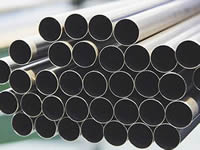
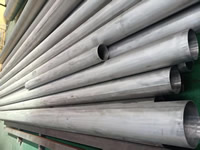
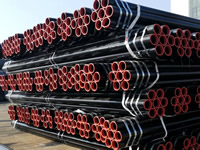
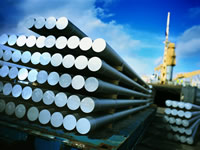

 Tel:+86 371 55057610
Tel:+86 371 55057610  Fax: +86 371 5505 7611
Fax: +86 371 5505 7611